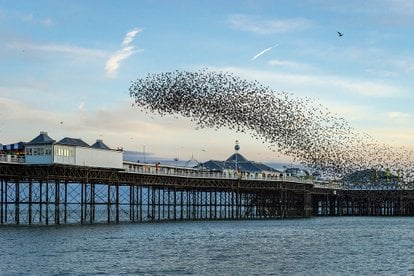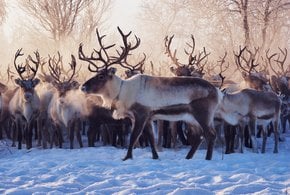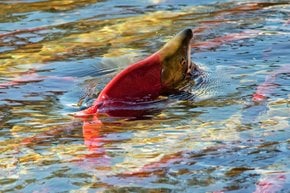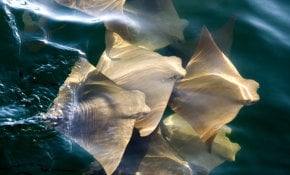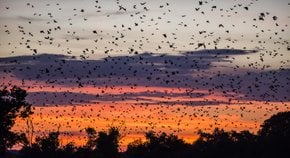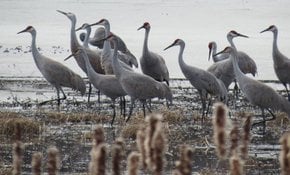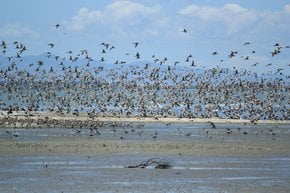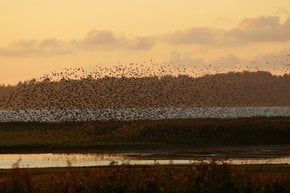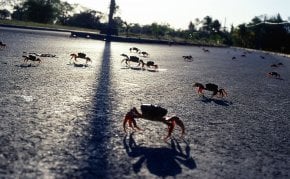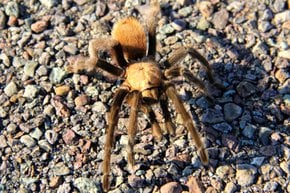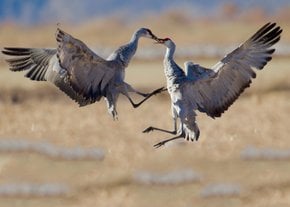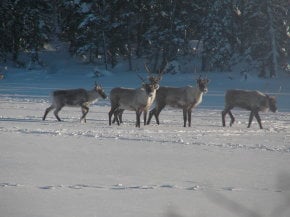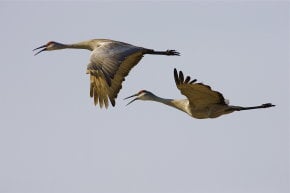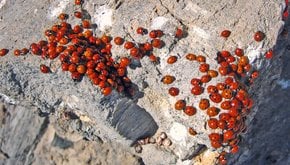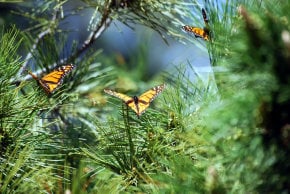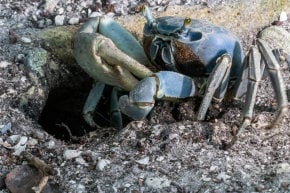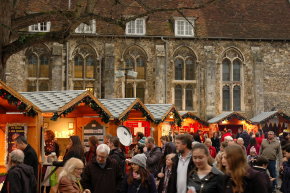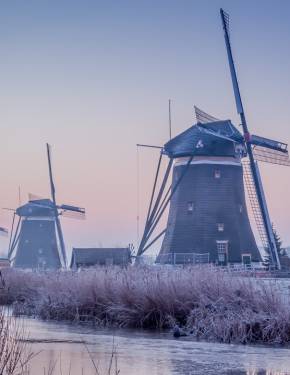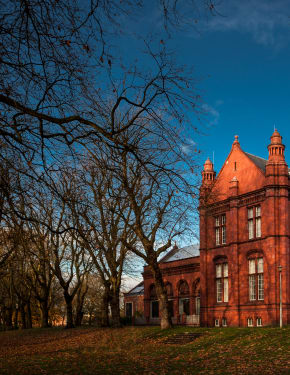Starling Murmuration at Brighton Pier in England 2025-2026
It's unclear how these birds are choosing their wintering grounds. But for some reason, quite a lot stop by at Brighton Pier for the entire season
Best time: November–February
Scandinavian starlings are known to winter in Southern Europe, though not all of them make the journey. While some travel as far south as Rome or Athens, a significant number have developed a fondness for Brighton Pier and choose to stay there throughout the entire winter. Each evening before dusk, hundreds of thousands of starlings return from their foraging across the Sussex countryside, including the downs around Brighton and Hove, to roost on the Brighton Pier. This spectacular gathering creates a breathtaking display as the starlings come together for the night.
What are Starling Murmurations?
Virtually every night, a multitude of plain, dark-colored birds gather at the seaside to perform their stunning pre-roosting twirling dance. But why do they engage in this mesmerizing display instead of heading straight to sleep or continuing their migration? One theory suggests that the coordinated movement of the flock helps protect the starlings from predators, such as falcons. In a swirling murmuration of thousands, it becomes difficult for a predator to single out one bird.
Additionally, this evening gathering may serve several purposes: it allows starlings to exchange information about good feeding areas and helps them stay warm during the night. By roosting together, they not only safeguard themselves from predators but also benefit from the collective warmth. The murmuration can be seen as a communal activity, akin to how humans enjoy social events like dancing and festivals.
When to see starlings at Brighton Pier?
In autumn, starlings from mainland Europe embark on their migration across the channel to spend the winter in the UK. From the last days of October through to the first days of March, you can witness this spectacular phenomenon at sunset along the pier. During this time, the starlings gather to form large roosts, with the first murmurations typically appearing in November, though they can start as early as September or October. As the season progresses, these roosts grow larger as more starlings join the gathering. By February, the autumn roosts generally begin to dissipate as the birds prepare for their return journey to Scandinavia.
Where to see starling murmuration?
Many Scandinavian starlings winter in Southern Europe, but a significant number choose to stop by Brighton Pier from November to February. Although these birds are thought to be the same species that migrate to Southern Europe, they inexplicably prefer Brighton Pier for their winter roosting.
Brighton
The spectacular "murmurations" can be viewed anywhere along the seafront between the piers or on the Palace Pier itself, where on a calm evening, you can even hear the flutter of their wings as they swoop in underneath to roost.
England
You can witness these stunning sunset starling displays in various locations across England. The website Starlings in the UK provides a murmuration map highlighting popular roosting sites. Notable spots include Blackpool's North Pier, Aberystwyth Royal Pier in Ceredigion, Dorset's Shell Bay, Somerset's Shapwick Heath, Swaffham, and Cumbria. Starling murmurations can also be seen at Otmoor in Oxfordshire, Leighton Moss in Lancashire, Fen Drayton in Cambridgeshire, and Minsmere in Suffolk.

